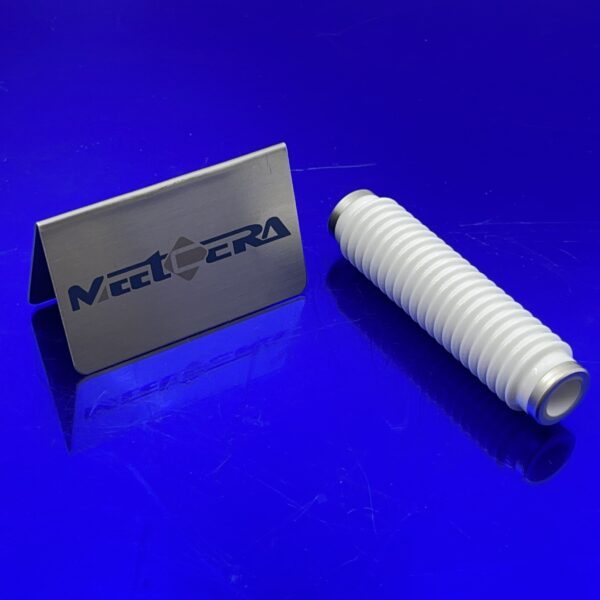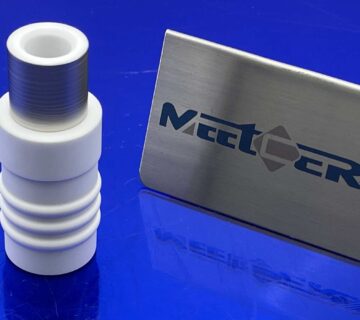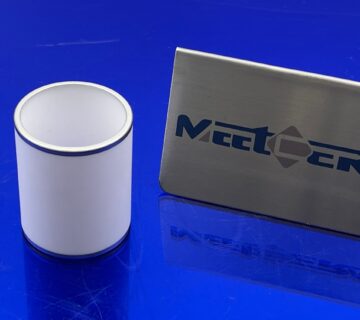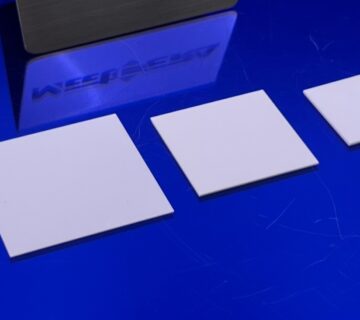What are the best 95% Aluminum Oxide Ceramics products?
Understanding 95% Alumina
95% alumina1 is a technical ceramic. It is mostly aluminum oxide ($Al_2O_3$), with a small percentage (around 5%) of other oxides added. These additions help in processing, like making the material dense at lower temperatures. This type of alumina is widely used because it offers high hardness, good electrical insulation, high temperature resistance, and is chemically stable. It provides a good mix of performance and cost for many applications. But, like all materials, it has limitations, and achieving its full potential depends heavily on how it is made.
How do engineers deal with the fact that not all 95% alumina performs the same way?
Engineers plan to specify material properties based on datasheets, but finished parts can still vary if the manufacturing process is not strictly controlled.
The quality of "95% Alumina Ceramic Products" varies greatly between manufacturers. Factors like the purity of the raw powder, milling process, forming method (like pressing), and firing temperature and time all affect the final density, grain size, and presence of defects. Inconsistent processing leads to parts with different strengths, dielectric properties, or thermal performance.
I remember a time a client bought 95% alumina insulators from a new supplier just because the price was lower. They installed them, and some failed much faster than expected in a high-voltage test. We found the material density was lower than the previous supplier's, even though both claimed "95% alumina." This cost the client a lot of time fixing the equipment.
How do designers account for this inherent brittleness?
Designers plan to avoid putting the ceramic in tension and use protective mounting methods. But in real-world applications, stress is not always predictable.
High-quality "Best 95% Alumina Ceramic Products2" minimize internal flaws (like voids or large grains) through superior processing. These flaws are often where cracks start. A manufacturer focused on quality uses fine powders and controlled sintering to create a uniform, fine-grained microstructure. This makes the material stronger and more resistant to crack initiation.
High-quality 95% alumina3 can be processed to include a metallization layer on specific surfaces. This layer provides a surface that can be brazed or soldered to metals. "Best 95% Alumina Products" offer consistent, strong metallization that allows for reliable, hermetic (airtight) joining. This creates a robust connection that withstands temperature changes and mechanical stress.
Creating a good ceramic-to-metal joint is a whole field of engineering itself. The materials expand at different rates with heat. The joining method must handle this difference without creating too much stress. Metallization and brazing, when done right, solve this.
The Value of "Best" 95% Alumina
Getting the "best" 95% alumina products is not just about the material itself. It is about the quality built into the product through the manufacturing process and the expertise of the supplier. It means getting parts with consistent properties, minimal defects, precise dimensions, and the ability to be reliably joined. This level of quality translates directly into more reliable, higher-performing end products for the customer.
Here is a comparison highlighting the difference quality makes:
| Characteristic | Lower Quality 95% Alumina | "Best" 95% Alumina Ceramic Products | Benefit to Customer |
|---|---|---|---|
| Material Consistency | Varies in density, grain size, purity | Highly consistent properties batch-to-batch | Predictable performance, higher reliability |
| Mechanical Strength | Lower due to more flaws | Higher due to fewer internal defects | More resistant to fracture, longer lifespan |
| Dimensional Accuracy | Wider tolerances, harder to machine | Tighter as-fired tolerances, precise grinding expertise | Easier assembly, reduced rework/scrap |
| Joining Reliability | Poor or inconsistent metallization/surface for joining | Consistent, strong metallization for reliable brazing | Robust, hermetic connections |
| Supplier Support | Limited technical help | Design assistance, material expertise | Optimized part design, faster development |
| Overall Reliability | Unpredictable failures | High confidence in long-term performance | Reduced downtime, lower maintenance costs |
Where Quality 95% Alumina Makes a Difference
"Best 95% Alumina Ceramic Products" are critical in applications where failure is costly or dangerous. This includes:
- High-performance electronics: Substrates for power modules (like IGBTs), sensor housings needing electrical isolation and thermal management.
- Industrial equipment: Wear components in pumps or valves, insulators in heating systems, components in welding equipment.
- Medical devices: Components in analytical instruments, electrical insulators in high-voltage medical equipment.
- Aerospace and Defense: Insulating components in radar systems, high-temperature structural parts.
How can engineers get complex shapes or very exact sizes (tight tolerances) when the material is so incredibly hard after firing?
Engineers usually mold ceramic parts close to the final shape before firing (this is called green machining or pressing). But shrinkage happens during firing, and you cannot always get the exact final dimension or intricate form needed this way.
Because 95% alumina is so hard post-firing, standard machining is impossible. You cannot mill slots, drill precise holes, or grind flat surfaces using conventional tools. This problem means that if a part requires a feature that cannot be achieved during the green state or compensates for shrinkage, it cannot be made from fully dense alumina, or it will not meet the required fit and function.
I recall a project where a client needed a ceramic seal ring with an exact step feature and a very tight outer diameter tolerance. They first tried making it oversized and hoped to use a metal lathe, which failed immediately. The ceramic would not cut, and the tool broke. This showed them that they needed specialized methods for the fired material.
How do designers ensure the surface meets these strict requirements on a hard material?
Designers plan for the ceramic surface to be smooth enough for things like sealing or electrical contact.
After firing, the surface of 95% alumina is often slightly rough or has small variations from shrinkage. Standard polishing methods that work on softer materials do not work here. Trying to smooth the surface with abrasives not hard enough just scratches it inefficiently. If the surface is not made smooth and flat, it cannot create a good seal, causes friction, or might lead to electrical tracking.
A rough surface on a seal ring means it will leak. A bumpy surface on an electronic substrate can affect signal integrity or thermal transfer. Getting a precise, smooth finish on a hard material is a specific challenge that traditional methods cannot solve.
What if a design needs small holes, internal threads, or complex internal channels in a fully hard 95% alumina part?
Engineers design parts with complex internal geometries or small features needed for fluid flow, electrical pathways, or mounting.
Creating small diameter holes, internal threads, or complex internal forms in fully sintered 95% alumina is extremely difficult with conventional drilling or milling because the material's hardness resists cutting and can easily chip or crack when force is applied. This limits the complexity of parts you can make and restricts design options.
Imagine needing a ceramic nozzle with very small, precise holes for a specific flow rate. Or a vacuum feedthrough with internal threads to mount another component. These features are often critical to the part's function, but making them in hard ceramic requires capabilities beyond standard workshops.
How We Machine 95% Alumina
Solving these problems requires specialized machining capabilities designed for hard, brittle materials. We use methods that do not rely on a tool being harder than the bulk ceramic in the way a metal drill works.
One key method is diamond grinding4. We use grinding wheels or tools where the abrasive particles are industrial diamonds. Diamond is much harder than alumina. The diamond particles scratch and chip away tiny pieces of the ceramic surface. This allows us to shape the material, create flat surfaces, external diameters, and internal bores.
Another method is lapping and polishing. This uses fine diamond slurries on flat plates to achieve very smooth surfaces and extreme flatness, crucial for seals or optical applications.
For holes and internal shapes, we might use ultrasonic machining5. A tool vibrates at high frequency while abrasive slurry is pumped between the tool and the ceramic. The vibration drives the abrasive particles to impact and chip away material. This is good for non-round holes and intricate shapes.
Laser machining can also be used for cutting or drilling small holes by using a focused laser beam to vaporize or melt the material precisely.
| Machining Method | Primary Tool/Mechanism | Best Suited For | Outcome |
|---|---|---|---|
| Diamond Grinding | Diamond embedded wheels/tools | Shaping outer/inner diameters, flat surfaces, forms | Precise dimensions, good surface finish |
| Lapping / Polishing | Diamond slurry on flat plates | Achieving high flatness and smooth surfaces | Excellent surface finish, tight flatness |
| Ultrasonic Machining | Vibrating tool with abrasive slurry | Non-round holes, cavities, intricate shapes | Complex internal features, small hole drilling |
| Laser Machining | Focused laser beam | Cutting complex profiles, drilling small holes | Precise cuts, very small holes |
Real-World Examples and Benefits
The ability to precisely machine 95% alumina after firing brings direct benefits. It allows for components with tighter tolerances6 (meaning parts fit and function better), more complex geometries (solving specific design challenges), and better surface finishes (improving sealing, reducing wear, enhancing electrical performance).
This translates to improved equipment performance because the components function exactly as designed. It leads to higher reliability because precise fits and smooth surfaces reduce stress points and wear. It can result in reduced overall system cost by enabling simpler assembly or extending component lifespan, even if the initial machining cost is higher than rough forming. It allows engineers to use the best material (95% alumina) even when the shape is complex.
Consider valve components. A ceramic valve seat needs extreme flatness and a precise angle to seal perfectly. This is achieved by grinding and lapping the fired alumina. A pump piston needs a very tight diameter tolerance and a smooth surface to move efficiently without leaking. This requires precise cylindrical grinding. These functions would not be possible without machining.
Conclusion
95% alumina is a valuable material for many industrial applications, offering a great combination of electrical, thermal, and mechanical properties. However, achieving the full benefits requires addressing challenges related to material consistency, brittleness, dimensional precision, joining, and supplier selection. Choosing "Best 95% Alumina Ceramic Products" means partnering with manufacturers who have the expertise and quality control to overcome these challenges. This ensures you get reliable, high-performing components that reduce downtime, lower costs, and enable the design of more advanced systems. Investing in quality 95% alumina is an investment in the reliability and success of your final product.
-
Explore this link to understand the unique properties and diverse applications of 95% alumina, enhancing your knowledge of its industrial significance. ↩
-
This resource will guide you in recognizing the best 95% alumina products, ensuring you make informed purchasing decisions for your projects. ↩
-
Discover the advantages of high-quality 95% alumina, which can lead to improved performance and reliability in your applications. ↩
-
Explore this link to understand how diamond grinding enhances precision in machining hard ceramics like alumina, ensuring better performance and durability. ↩
-
Learn about ultrasonic machining to see how it enables the creation of intricate shapes in ceramics, crucial for advanced engineering applications. ↩
-
Discover the significance of tighter tolerances in manufacturing, which can lead to improved performance and reliability in engineered components. ↩










No comment